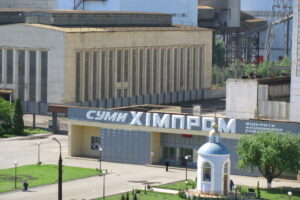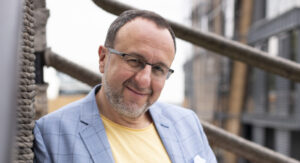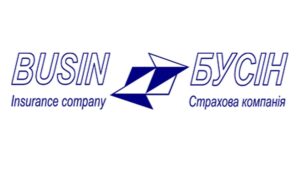
The State Property Fund of Ukraine (SPF) has announced that on January 13, 2026, it will hold a repeat online auction for the privatization of 99.99% of the shares of one of the largest domestic chemical enterprises, Sumykhimprom, the agency’s press service reported.
The SPF set the starting price of the lot at UAH 1 billion 88.081 million (excluding VAT), which is 9.3% lower than the starting price at the auction on June 11, which did not take place due to the lack of participants.
The SPF reminded that Sumykhimprom is one of the key objects of large-scale privatization under its management.
“Sumykhimprom is a unique opportunity to acquire almost 100% of the shares of an operating, powerful chemical complex with a wide range of products, significant production areas for further modernization and development of export potential,” the SPF emphasized.
According to the terms of the tender, the new owner will have to maintain the company’s main activities and invest at least UAH 150 million in technical re-equipment and modernization of production. In addition, the winner will have to pay off wage and budget debts, as well as overdue accounts payable, within six months, except for debts to individuals and legal entities subject to sanctions and related parties, as well as creditors whose beneficiaries are citizens/residents of the Russian Federation and/or Belarus. The winner must comply with social guarantees for employees in accordance with the requirements of labor legislation and not allow their dismissal within six months after the acquisition of the asset.
Sumykhimprom is one of the largest domestic enterprises producing complex mineral fertilizers, titanium dioxide, sulfuric acid, and other types of inorganic chemicals. The company is one of the top three budget-generating enterprises in the city of Sumy and the region and produces more than 30 brands of NPK fertilizers with different nutrient ratios for different soil and climatic zones.
For more than 10 years, the plant was managed by a group of companies affiliated with entrepreneur Dmitry Firtash’s Group DF. In November 2023, the Commercial Court of Sumy Region granted the petition of the State Property Fund and the Ministry of Justice and closed the bankruptcy and reorganization proceedings against Sumykhimprom.
The SPF planned to sell the company to a private investor even before the full-scale war. However, privatization was delayed due to the position of minority shareholder Dmitry Firtash, who in 2010 acquired 0.005% of the company’s shares and control over its management. Sumykhimprom accumulated debts, which allowed the creation of a committee of creditors and the initiation of reorganization proceedings.
Since 2015, the SPF has been trying to stop the bankruptcy proceedings of the company through the courts, but was only able to do so in 2023, which unblocked the privatization.
In March 2022, the Russians shelled the company, leading to an ammonia leak. As a result, the plant was out of operation for a year and resumed work in the spring of 2023. As of June 2025, the front line was less than 30 km from Sumykhimprom.
According to information on the website, the company’s revenue in the first half of 2025 fell fourfold to UAH 36.1 million, while net losses decreased by 39.6% to UAH 189.1 million. In addition, as of mid-year, the company had UAH 0.30 billion in long-term debt and UAH 3.63 billion in current liabilities.

Strengthening cloud infrastructure and cybersecurity is one of the key areas for strengthening Ukraine’s “digital shield” in the context of the ongoing war, according to participants in the panel discussion “Rebuilding Smarter: Cloud Infrastructure and Cyber Security for a Strong Ukraine’s Digital Shield” at the “Rebuilding Ukraine: Security, Opportunities, Investments” forum in Bucharest.
The panel was moderated by Daniel Ionita, senior associate expert at the New Strategy Center (Romania). The discussion was joined by Oleg Haiduk, advisor on AI and innovation at the PARKOVY data center and former Deputy Minister of Defense of Ukraine for Digital Development; Volodymyr Luchenko, technical director at Kyivstar; Dragos Dima, senior cybersecurity advisor at the EU Mission for Civilian Security Sector Reform in Ukraine (EUAM Ukraine) and Olga Belyakova, co-head of technology, media, and communications practice at CMS Cameron McKenna LLC in Central and Eastern Europe.
According to the speakers, immediately after the start of the full-scale Russian invasion in February 2022, Ukraine transferred critical data arrays to data centers in the EU. By 2023, the strategy had been transformed towards the creation of sovereign national data centers with support for cross-border backup solutions. This transition was made possible by accelerated legislative changes, which by the end of the year provided a functional regulatory framework for the provision of cloud services.
In the field of cybersecurity, the key measures, according to the panel participants, are the widespread use of VPN solutions, the introduction of centralized access management (PAM), the use of multi-factor authentication, and the integration of WAF-class solutions to protect web resources. “This is not just about technical means, but about building a comprehensive architecture of trust – from the user to state registries and critical infrastructure,” said Haiduk.
The experts emphasized that Ukraine’s cyber resilience must be built in a cross-border format—through the integration of critical digital infrastructure into NATO and EU security systems, joint incident response protocols, and the exchange of threat data. “The more closely Ukraine’s digital infrastructure is integrated into the Euro-Atlantic security ecosystem, the more difficult it will be to isolate or paralyze it as a result of cyberattacks,” Belyakova emphasized.
Following the discussion, participants concluded that the development of national data centers, the expansion of cloud services, and the synchronization of cyber defense standards with NATO and the EU are necessary conditions not only for the security of the public sector, but also for the stable functioning of business and the implementation of reconstruction projects.
The forum “Rebuilding Ukraine: Security, Opportunities, Investments” is being held on December 11-12 in Bucharest under the auspices of the Romanian Ministry of Foreign Affairs and the Ukrainian Ministry of Foreign Affairs and is organized by the New Strategy Center. According to the organizers, more than 30 panel discussions and parallel sessions are planned over two days with the participation of representatives of governments, international organizations, the private sector, financial institutions, and experts from Europe, North America, and Asia. The topics of the panels cover security and defense, infrastructure, financing and investment, green energy, digitalization, human capital, and cross-border cooperation.
Bucharest, cloud infrastructure, digital shield, EU, INTEGRATION, NATO

TK-Domashniy Tekstil, part of the Textile-Contact (TK Group) group of companies, significantly increased its exports in December, in particular, it began working with customers from Sweden for the first time, according to the group’s owner, Alexander Sokolovsky.
“December is just beginning, but it has already become a record month for TK-Domashniy Tekstil’s exports: since the beginning of the month, we have shipped seven trucks of our own products to Europe! We have started working with customers from Sweden for the first time, with whom we have contracted our own digitally printed fabrics,” he wrote on Facebook.
It is specified that the designs were provided by the customer, and the Chernihiv Textile Combine (TK-DT Chernihiv) was fully responsible for the manufacture of fabrics and digital printing.
Products were also shipped to a new customer in Romania.
According to Sokolovsky, two trucks went to a new partner in the Baltics with a custom order for mattresses filled with 70% Ukrainian flax.
“The covers for these mattresses were sewn from natural cotton fabric (half-panels), which is also manufactured at our textile production facility,” added the owner of TK Group.
This month, the company made two large shipments to Lithuania—to the DEPO supermarket chain, where two trucks of finished home textile products were delivered, and the next batch is already being prepared.
“In addition, we made another shipment to our regular customer in Georgia, the Domino supermarket chain. This time, it was an expanded range of home textiles under our HomeLine brand with pre-New Year designs,” said Sokolovsky.
At the same time, he noted that currently, TC and many light industry enterprises are facing a problem where even regular customers have been afraid to place orders in Ukraine for the past two years.
“Although it is us who are taking the risk here, not them. Interestingly, this was not the case at the beginning of the full-scale invasion in 2022-2023. On the contrary, many Europeans tried to help Ukrainian entrepreneurs and, even understanding our capabilities, increased their orders despite logistical and other risks. Now, for some reason, it is much more difficult to break through, but we are doing everything possible and impossible,” Sokolovsky emphasized.
TK-Domashniy Tekstil is a leader in the production of fabrics, home textiles, and children’s products in Ukraine. Its asset portfolio includes one of the few finishing factories in Ukraine that produces cotton fabrics in Chernihiv, TK-DT Chernihiv. Its assets also include garment factories in Kyiv, Ternopil, Chernihiv, and Odesa; a shoe factory in Chyhyryn; a knitting factory; and a synthetic winterizer factory in Chernihiv.
The company’s products are imported to Denmark, Germany, Lithuania, Latvia, Georgia, and France.
TK Group was founded in 1995. It is currently a holding company that brings together the entire spectrum of textile industry services, from raw materials and threads to ready-made solutions for B2B, B2G, and B2C customers.
The group consists of 13 factories and employs about 1,500 people.
Since the start of the full-scale war, the group has invested about $14.5 million in development.
The founder of the group is Sokolovsky, chairman of the Light Industry Defense Procurement Committee at the Federation of Employers of Ukraine and a member of the Manifest 42 public movement.

Participants in the Green Reconstruction and Green Energy panel at the Rebuilding Ukraine: Security, Opportunities, Investments forum in the Romanian capital concluded that the modernization and decarbonization of Ukraine’s energy infrastructure must go hand in hand with digitalization, the development of smart cities, and deeper integration into the EU energy space.
The panel was moderated by Corneliu Bodea, president of the Romanian Energy Center, who outlined the need for profound transformations of energy systems to transition to a low-carbon model. The key speaker was Bogdan-Gruia Ivan, Romania’s Minister of Energy, who set the strategic guidelines for the discussion. The discussion was also joined by George Agafitei, Head of Sustainable Development and Institutional Relations at PPC Group; Vitaly Radchenko, Head of Energy and Climate Change Practice at CMS Ukraine; Nicolas Richard, CEO of Engie Romania; Gheorghe Chubotar, President of Electroalfa International; and Eduard Dumitrascu, President of the Romanian Smart City Association.
The speakers noted that urban digitalization and energy modernization projects, in particular smart city initiatives, have become important catalysts for the renewal of local energy systems and municipal infrastructure. They emphasized that Ukraine should not be underestimated in terms of technological solutions: businesses and government agencies are highly receptive to the implementation of digital tools, from artificial intelligence to network infrastructure optimization. “Ukraine has already demonstrated its ability to quickly transition to new digital platforms. This makes it possible to build a modern energy sector rather than a ‘patched-up’ one,” Radchenko noted.
Participants emphasized that Ukraine is undergoing an intensive phase of legislative reforms and convergence with European standards in the fields of energy, ecology, and market regulation. This creates conditions for more effective coordination between central authorities and local levels, as well as for the implementation of joint projects with EU countries, with an emphasis on inter-state interconnectors, network balancing, and strengthening regional energy security. “Aligning rules with European ones is not only a requirement for integration, but also a prerequisite for attracting investors to long-term ‘green’ projects,” Ivan emphasized.
A separate part of the discussion was devoted to rethinking the architecture of energy networks in the direction of decentralization, flexibility, and increasing opportunities for electricity flows between countries. Participants recalled that Ukraine is already working in sync with the European energy system and is increasing the volume of electricity and gas exchanges with EU countries. In their opinion, Ukraine’s “green” transformation requires not only the physical reconstruction of generation and network assets, but also the formation of a new culture of innovation capable of attracting strategic investments and the most advanced technologies.
In this context, cooperation between European and Ukrainian energy and technology ecosystems was described as a fundamental element of regional energy sustainability. Participants called green reconstruction a historic opportunity to form a more sustainable, digitized, and EU-integrated Ukrainian economy. The panel concluded that, despite the challenges, close cooperation and coordinated investment by the state, business, and international partners is the only realistic path to an effective, future-oriented reconstruction of the energy sector.
The forum “Rebuilding Ukraine: Security, Opportunities, Investments” is being held on December 11-12 in Bucharest under the auspices of the Romanian Ministry of Foreign Affairs and the Ukrainian Ministry of Foreign Affairs and is organized by the New Strategy Center. According to the organizers, more than 30 panel discussions and parallel sessions are planned over two days with the participation of representatives of governments, international organizations, the private sector, financial institutions, and experts from Europe, North America, and Asia. The topics of the panels cover security and defense, infrastructure, financing and investment, green energy, digitalization, human capital, and cross-border cooperation.
DIGITALIZATION, energy market, EU, INTEGRATION, RECONSTRUCTION

Insurance company Busin (Kyiv) collected UAH 175.2 million in gross premiums in January-September 2025, which is 9.08% more than in the same period of 2024, according to Standard Rating, which updated the insurer’s credit rating/financial stability rating to “uaAA+” on the national scale based on an analysis of the specified period.
The rating agency’s report notes that revenues from reinsurers increased by 6.05% to UAH 189.1 million, and the ratio between premiums attributable to reinsurers and gross premiums decreased by 3.09 percentage points (pp) to 107.94%.
In the first nine months of 2025, the company paid out UAH 215,000 in insurance payments and reimbursements to its clients, compared to UAH 31.869 million in the same period of 2024. RA notes that significant fluctuations in the volume of business and the level of payments of JSC IC Busin are related to the specifics of its activities and specialization in insurance of large risks, in particular aviation risks.
As of September 1, 2025, the company’s assets decreased by 5.44% to UAH 282.5 million, equity increased by 13.4% to UAH 182.7 million, and cash and cash equivalents decreased by 26.9% to UAH 235.6 million.
RA notes that the financial results of Busin Insurance Company JSC improved significantly in the period under review. In particular, based on the results of the first nine months of 2025, the insurer received significant amounts of operating profit (UAH 34.08 million) and net profit (UAH 24.84 million), while based on the results of the same period in 2024, the insurer’s activities were unprofitable.
Busin Insurance Company was registered in February 1993. It specializes in risk insurance. It is a member of a number of professional and industry associations, including the League of Insurance Organizations of Ukraine, the Insurance Payments Club, the International Association of Aviation Insurers (UA), the Nuclear Insurance Pool, the American Chamber of Commerce in Ukraine, and the British Business Club.

The widespread use of unmanned systems in Russia’s war against Ukraine represents not just a technological evolution, but a profound change in the logic of warfare, for which most European countries are not yet prepared, according to participants in the panel discussion “The Russia–Ukraine Drone War: Innovation on the Front Line and Beyond. What Can We Learn for Our Own Defense?” at the Ukraine Recovery Forum in Bucharest.
Panel VIa was moderated by Greg Melcher, Chief Operating Officer of the New Generation Warfare Centre (USA). The discussion was attended by Andriy Sirko-Galushchenko, an expert in the development of UAVs for military applications; Terry Jamison, International Director of Boeing’s Vertical Takeoff and Landing Aircraft Division; Mustafa Nayem, Director of Public Communications at GTX; former Prime Minister of Romania, retired General Nicolae Ciucă, and Deputy Chief of Staff for Operations and Training, Lieutenant General Julian Berdila.
According to the speakers, what until recently was perceived as a “distant technological horizon” has already become an everyday operational reality. The development of unmanned systems, open architectures, and the rapid integration of new capabilities indicate that the “future of warfare” has arrived much sooner than many Western players expected. Ukraine’s combat experience has shown that accelerated innovation cycles are leading to a structural transformation in the planning of air, ground, and joint operations.
Participants emphasized that the combined use of manned and unmanned platforms, as well as immediate technical interoperability between them, are becoming a basic requirement for the adaptation of modern armed forces. Drones are already being used systematically for reconnaissance, high-precision strikes, logistics, mining and demining, artillery fire correction, and special operations support. Massive coordinated attacks on critical infrastructure have demonstrated the limitations of purely reactive defense and highlighted the need to neutralize threats “at the source.”
At the same time, counter-drone systems are rapidly developing, combining existing surveillance and electronic warfare capabilities with new solutions to counter large numbers of small, low-altitude targets. “This is no longer an episodic tool, but a full-fledged layer of the modern battlefield that requires a separate doctrine, forces, and means,” Berdila noted.
A separate emphasis in the discussion was placed on Europe’s vulnerability to hybrid forms of aggression. According to experts, traditional threat assessments do not correspond to the realities in which the enemy acts mainly with asymmetric, scattered, and difficult-to-attribute methods. Incidents involving the appearance of unknown drones near critical infrastructure in various European countries, they said, expose the gap between public perception, the level of institutional preparedness, and the actual nature of the risks.
Following the discussion, the participants concluded that “drone” warfare is not only a technical issue but also a challenge for institutional capacity and defense planning. Adapting to the new operational environment requires flexible institutions, short innovation cycles, coordinated investments, and a doctrine capable of quickly integrating the lessons learned from Ukraine’s experience. Modern warfare, they emphasized, has become a space where speed of adaptation, integration of systems, and simultaneous readiness for offensive and defensive actions are key elements of strategic resilience.
The forum “Rebuilding Ukraine: Security, Opportunities, Investments” is being held on December 11-12 in Bucharest under the auspices of the Romanian Ministry of Foreign Affairs and the Ukrainian Ministry of Foreign Affairs and organized by the New Strategy Center. According to the organizers, more than 30 panel discussions and parallel sessions are planned over two days with the participation of representatives of governments, international organizations, the private sector, financial institutions, and experts from Europe, North America, and Asia. The topics of the panels cover security and defense, infrastructure, financing and investment, green energy, digitalization, human capital, and cross-border cooperation.